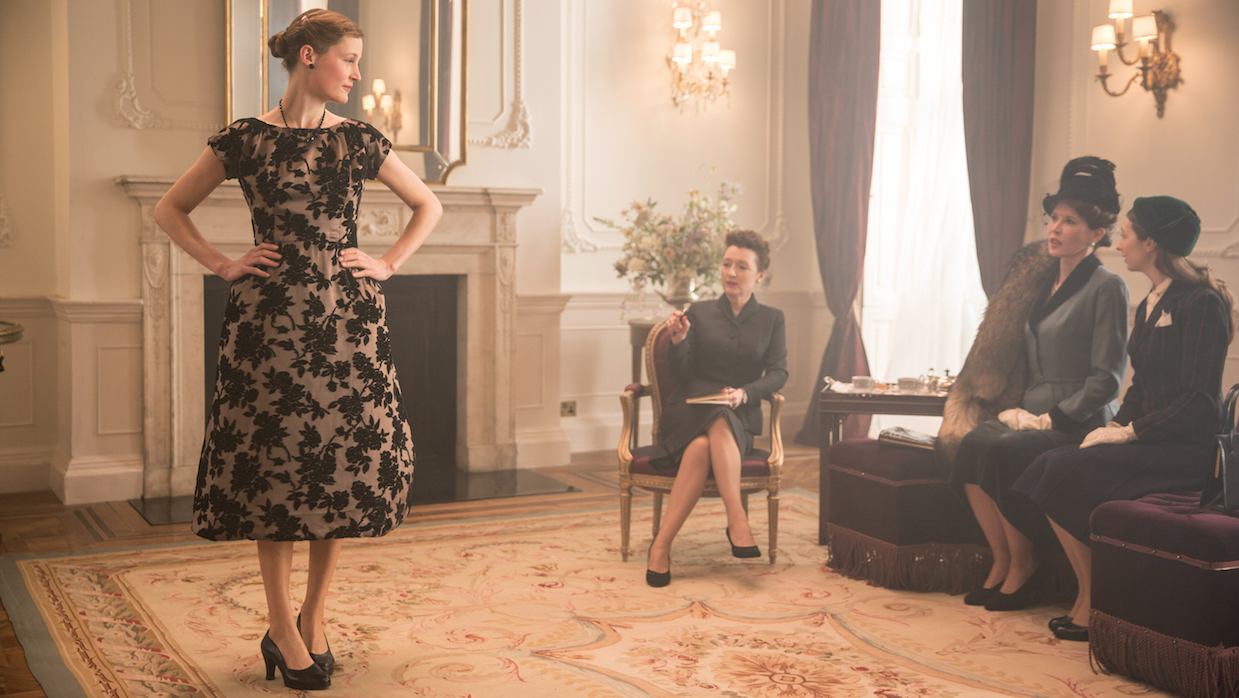
Paul Thomas Anderson’s “Phantom Thread” follows an haute couture dressmaker, Reynolds Woodcock (Daniel Day-Lewis) through the ultra-rich and stuffy high-fashion world of 1950s London. Over the course of the film’s two hours and ten minutes, we become acquainted with the eccentric, obsessive, controlling genius that is Woodcock; his troubled relationships with his sister, Cyril (Leslie Manville); and his wife and muse, Alma, (a subtle yet emotive Vicky Krieps). We also learn about how the relationships between these figures suffer as a result of Woodcock’s work, which matters more to him than any living person.
The script, also by Anderson, is confident and bizarre. His direction is expert, Day-Lewis’ performance is mesmerizing, and the score—courtesy of Radiohead’s Jonny Greenwood—is haunting. This movie has all the makings of a masterpiece, but it falls short. It fails to come together—unlike some of Anderson’s brilliant prior works, such as “The Master,” and “There Will Be Blood”— into a meaningful and cohesive story. Instead, “Phantom Thread” shows us the elements of a great movie without sewing them into a single, cohesive gesture, and thus we are left with fragmented pieces instead of a whole.

In the details, Anderson makes many good choices. The grand old townhouse where most of the film takes place is an ideal setting. With its narrow corridors, locked doors and winding stairways, the house portrays Woodcock’s fussy, anxious, compartmentalizing mind and the endless formality and stratification to which he subjects those who live and work around him. In this house, butter spreading on toast sounds like a wrecking ball, the slurping of hot tea, like a vacuum cleaner running over a puddle. Woodcock processes all of these highly amplified sounds with half-suppressed scowls and twitches of irritation, positioning the viewer in his nervous, peace-and-quiet seeking perspective with devastatingly effective results. The scenes from Woodcock’s perspective are hard to watch, and that’s because Woodcock’s life is hard to live. Anderson uses all the tools at his disposal to put us in this agonizing position.
The result is an expertly crafted movie, but one that’s hard to watch. This isn’t necessarily a bad thing. Few of Anderson’s films are easy to watch. “The Master,” for example, is oblique, slow-paced, and packs all its emotional payoff into a few fleeting moments. But those are glorious moments, in which everything suddenly makes sense, and you understand why you’ve been dragged along on this confusing, atmospheric ride of a movie. “Phantom Thread,” however, lacks these moments. Instead, once the title reappears over the elegantly staged final shot, you realize that all you have is a well-crafted film, a great acting performance, some pretty music, but no glue, no soul, no grander purpose to hold these elements together.
What we see is a failure to answer the “so what?” question. It sounds like a childish critique, but it matters. When the movie ends, and you ask yourself why this film exists, why it was made—an answer that should not be too hard to locate. For instance, “The Master,” shows us the deep trauma sustained by veterans and investigates the nature of demagoguery and ideological manipulation. These are highly relevant social issues that lend the film a sense of urgency. After watching it, one becomes a more informed and empathetic citizen. “Phantom Thread” does not display this type of relevance. On the contrary, it depicts the elite world of high fashion in postwar London without providing a commentary on class and the denial of the scope and depth of human suffering by society’s wealthiest. This movie excuses that denial and even rewards it by not showing its consequences.
Let’s say a movie doesn’t require explicit sociopolitical relevance to answer the “so what?” question. Alternatively, a movie can show us unique and fascinating characters that expand our understanding of human behavior and relationships. “Phantom Thread” verges on this feat: Reynolds Woodcock is intriguing, fun to watch, a portrait of a tormented creative genius. Yet this character relies too heavily on the trope of the tortured artist to carry the movie by himself. Woodcock’s perverse and unhealthy marriage to Alma could have also carried the movie. Watching their power dynamic unfold, alongside Alma’s unyielding hope that her husband will change, is at times heartbreaking.
This troubled relationship may be the closest thing to a dominant emotional tenor throughout “Phantom Thread,” and a scene involving a mushroom omelet comes close to providing that Andersonian “a-ha!” moment. But if Alma and Woodcock’s odd power struggle is the crux of the film, then so many of the film’s other components are superfluous. Why make the film about couture dressmaking and not some other art form? You get the sense that Woodcock would still be Woodcock if he were a filmmaker, a playwright, or a sculptor. Why set it in London in the 1950s? Another city and another time wouldn’t have changed the movie much at all. Many cities have cramped townhouses that haven’t changed in a century. The film’s choices, therefore, are not deliberate, unlike in Anderson’s other works where the alteration of any detail would cause the whole film—the whole concept—to collapse.
The “so what?” question, then, is answered partially but not fully. “Phantom Thread” is a good movie, but not a great movie. With its direction, its performances, its occasional moments of magic, it could and should have been better.
Matteo Heilbrun can be reached at mheilbrun@wesleyan.edu


Leave a Reply